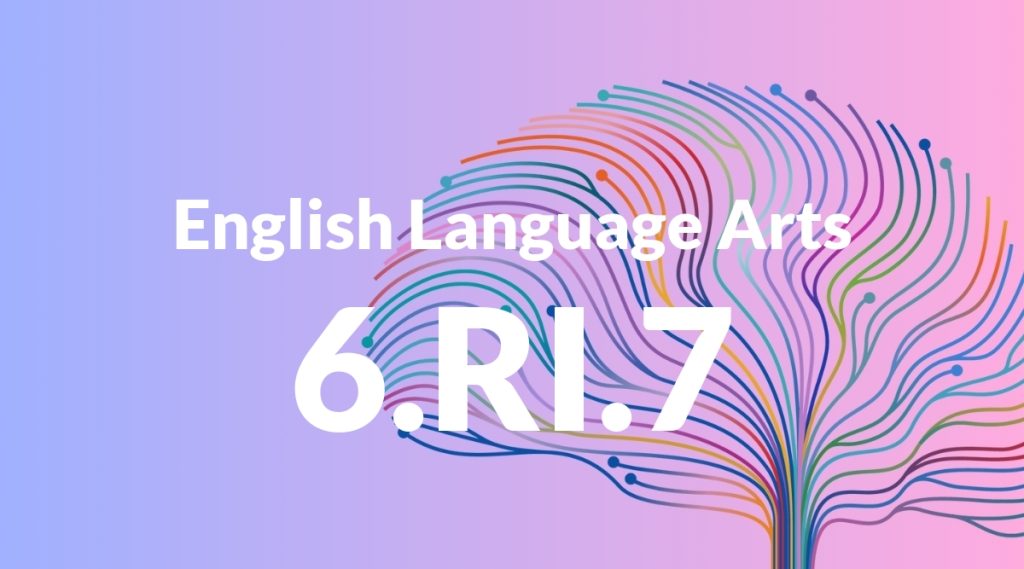Standard: 6.RI.7 – Integrate information presented in different media or formats (e.g., visually, quantitatively) as well as in words to develop a coherent understanding of a topic or issue.
Grade level: Grade 6
Subject: English Language Arts
Domain: Reading: Informational Text
Teacher Overview
This standard emphasizes the importance of integrating information from various media and formats to develop a comprehensive understanding of a topic. It is crucial in helping students become versatile readers and thinkers who can navigate and synthesize information from diverse sources. Students need to have a solid grasp of identifying main ideas and supporting details in texts, as well as interpreting basic visual and quantitative data.
Mastering this standard will enable students to critically evaluate and synthesize information from multiple sources, a skill essential for advanced academic work and informed citizenship.
Common Misconception 1
A common misconception is that visual or quantitative information is less important than textual information. This is incorrect because all types of information provide unique insights and are equally valuable in understanding a topic comprehensively.
Intervention 1
To address this misconception, teachers can design activities that require students to use visual, quantitative, and textual information equally to solve problems or answer questions, reinforcing the importance of all formats.
Common Misconception 2
Another misconception is that different types of information do not connect to form a coherent understanding. This is incorrect because integrating various information sources provides a more complete and nuanced understanding of a topic.
Intervention 2
Teachers can use graphic organizers to help students visually map out how different types of information relate to each other, aiding in the synthesis of a coherent understanding.
Prerequisite Knowledge
Students should be able to identify main ideas and details in a text, understand basic visual and quantitative information, and have experience summarizing information from various sources.
Subsequent Knowledge
Students will develop skills in critically evaluating the credibility of different sources, synthesizing complex information from multiple formats, and presenting their findings in a coherent manner.
Instructional Activities
- Create a project where students analyze a news event using articles, videos, and infographics.
- Have students compare and contrast information from a written report and a data chart in a science lesson.
- Use maps and written descriptions to explore historical events and their significance.




